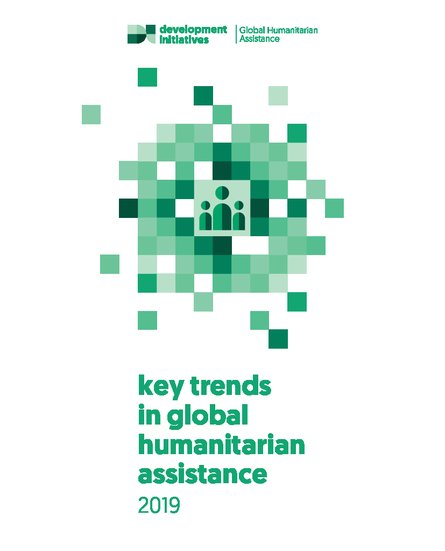
Ahead of the annual Global Humanitarian Assistance report, to be published in September, this snapshot of the key trends in global humanitarian assistance provides clear and independent top-line analysis of the latest data on international financing at work in humanitarian situations.
A crisis can disproportionately impact people in poverty. Limited access to resources among the poorest people can exacerbate vulnerability to a crisis, while experiencing a crisis can draw people further into poverty. In 2018, countries which were the subject of humanitarian appeals for two or more consecutive years were home to 9% of the global population. Yet they accommodated just over a fifth (21%) of the global population in poverty, living on less than $3.20 per day, and a third of the global population in extreme poverty (33%), living on less than $1.90 per day. This data supports other evidence highlighting the trend that poverty is increasingly concentrated in crisis contexts.
Domestic governments should be the primary responders to a crisis, using their own revenues, with international humanitarian assistance complementing where necessary. Yet, in countries with consecutive humanitarian appeals, non-grant government revenue accounted for only 58% of all available resources in 2017, compared with 75% for other developing countries. Resourcing and coordinating humanitarian and development responses to a crisis, and to poverty in crisis contexts, is therefore vital.
International humanitarian assistance remains a critical resource for meeting the needs of people affected by a crisis. In 2018, international humanitarian assistance continued a five-year trend of growth; while the pace of growth has slowed, rising by just 1% from 2017 to an estimated US$28.9 billion. There has been an estimated increase of 30% (US$6.7 billion) since 2014.
In aggregate, contributions of international humanitarian assistance from governments and EU institutions grew by US$0.7 billion from 2017 to US$22.6 billion in 2018. Among the 20 largest contributors, increases were made by seven governments (three increasing by more than 10%), with 13 reducing the volume of assistance provided (eight by more than 10%). The overall growth in international humanitarian assistance was driven by increased contributions from two countries in the Middle East and North of Sahara region. The United Arab Emirates provided US$2 billion of assistance in 2018, an increase of US$1.7 billion from 2017, while Saudi Arabia contributed US$1.3 billion, a rise of US$806 million. In contrast, aggregated contributions by European and North and Central American governments decreased. These were down by US$1.0 billion and US$446 million, respectively.
International humanitarian assistance continued to be concentrated in a small number of crises. In 2017, 10 countries accounted for 63% of all country-allocable humanitarian assistance. Syria, Yemen and South Sudan received almost half of the assistance to these 10 countries (30% of total country-allocable humanitarian assistance). Of the assistance directed to the 10 largest recipients, 59% went to countries in the Middle East and North of Sahara region, with 34% flowing to countries in sub-Saharan Africa.
The majority of direct government funding for international humanitarian assistance (64%) was channelled to multilateral agencies in 2017, increasing from 60% in 2016. Conversely, private donors provided most (85%) of their assistance to NGOs. Funding to NGOs as a proportion of total international humanitarian assistance increased slightly, from 33% in 2016 to 34% in 2017.